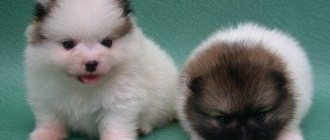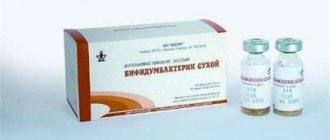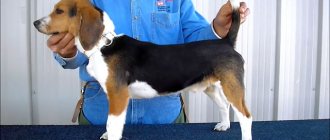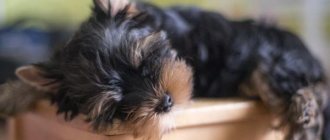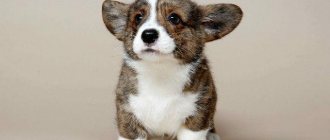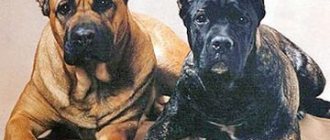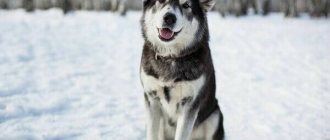- Pug
8965
When you decide to have a pet, you should know how to choose a pug puppy and how to properly care for it. The dog must be independent, not dependent on its mother, and be accustomed to walks.
- Choosing a puppy
- Types of classes
- Appearance of the puppy
- Main characteristics of pugs
- Communication with the breeder Share link:
Breed information
Pugs are originally from China . They are very smart, calm, friendly and affectionate. Sometimes they are lazy, so it is necessary to train them from childhood, and also walk them twice a day.
You need to start training pugs from early childhood.
To more successfully carry out commands, try to have frequent contact with the puppy so that he remembers you faster.
There is no need to overload your pet with frequent execution of the same command. New teams need to be added gradually.
Puppies are very cheerful, love to play and have fun. They are quite unpretentious, but at the same time they are very attached to their owners, reliable, and, despite their small stature, they are always ready to defend the family.
Young animals need to be fed more often than adults, since during the growth period pugs spend a lot of energy and need vitamins.
The following scheme applies for puppies: 1 - 2 months - 6 feedings per day, 2 - 4 months - 5 feedings, 4 - 6 months - 4 feedings, 6 - 12 months - 3 feedings.
Treatment of skin folds
Muzzle . The pug's folded face also requires care. Sweat, dust, and discharge from the eyes accumulate in the folds, causing an unpleasant odor and irritation. The folds are cleaned with special hypoallergenic wet wipes, cotton pads soaked in alcohol-free lotion for baby skin, hydrogen peroxide, chlorhexidine solution and sprinkled with baby powder. It is enough to carry out the procedure once a week, but if the folds are massive and impede air circulation, then you need to clean the folds twice a week.
Nose . The tip of the pug's nose also requires care. Its skin is dry and prone to cracking. Therefore, the nose also needs to be nourished - lubricated with baby oil.
If the skin in the folds is inflamed, then experienced dog breeders recommend treating the inflammation with Levomikol or Malovit ointments. They eliminate pimples, diaper rash, and irritation. But before treatment, you need to consult a veterinarian, since the cause of inflammation can be demodicosis, a disease caused by a skin mite.
Communication with the breeder
Having chosen the puppy you like, you should consult with the owner of the kennel. Boys and girls need different care. We must not forget about vaccinations and deworming of puppies.
Also, you need to find out if he is a reseller, otherwise there is a possibility that he is saving on keeping the puppies, which means the dogs are in poor conditions.
Pug boys are well suited for a show career; they do not have to bear and care for the puppies that are born. They are always in shape, well-groomed and cheerful.
Girls can also participate in exhibitions, but sometimes, as a result of the birth of puppies, the dog may miss the competition or be pregnant at that time. Girls are more suitable for breeding. Pets make loving mothers.
Where is the best place to buy
You can buy a pug cheaply at the poultry market. But you will not receive any guarantees that the dog is healthy, was born and raised in good conditions. Unscrupulous sellers pass off purebred dogs as pugs, and when your pet grows up, you may be in for an unpleasant surprise.
The second option is the Internet. The sites offer many advertisements. Kutyats are often sold by people who already have pugs at home, and regularly bring puppies. The dogs are in good conditions, but often they do not have a pedigree or vaccinations.
The most reliable place is a specialized nursery with a good reputation. Advantages of purchasing:
- the puppy is taken care of from the moment of its life in the womb, mothers provide optimal conditions and diet for bearing the fetus;
- specialists provide lifelong consultations;
- there is an opportunity to look at the dog’s parents;
- the seller provides a full package of documents.
Please note that when purchasing, in all three cases, you can meet a good or bad seller, receive real or fake documents. You should not overly trust reviews on the Internet; it is better to buy a pug through someone you know. If this is not possible, carefully study all the documents and have a detailed conversation with the seller.
Popular sections:
Aquariums Sale of kittens and puppies Terrariums Products for cats Products for dogs
How long does a dog bear puppies?
Pregnancy in pugs lasts about two months. At the very beginning, there are practically no changes in the appearance of the animal. But gradually the dog’s body begins to rebuild. After all, already from the second week, active growth of embryos begins in her stomach.
By the middle of pregnancy, the animal's behavior changes somewhat: the dog becomes less active, sleeps more, gains weight (which increases the need for food), its abdomen and mammary glands enlarge, and urination occurs less frequently.
For a more accurate result, you need to visit a veterinary hospital.
It is recommended to feed a pregnant dog three times a day.
Just a few "or's"
If you are ready to give part of your time to your future pet, to care for it, feed it, walk it, treat it, then you only have to clarify a few possible options for choosing a dog:
- male or female;
- the puppy is small or older;
- color - black, beige or apricot;
- price - expensive or cheap pug.
But in any case, pug puppies presented for selection must be healthy, well-fed and active.
To what age do they grow?
Pug puppies grow quite quickly, with the most changes occurring in the first two months.
With proper nutrition, pugs gain their maximum normal weight by the age of one year (from 9 to 12 months).
However, some dogs can continue to grow for up to 18 months. A healthy adult weighs from 6 to 8 kg and reaches a height of 28 to 32 cm. These dogs live 13 - 15 years.
Stages of growing up
Newly born puppies can sleep up to 22 hours; by two months the sleep period reaches 18 hours a day. During this period of time, puppies very quickly double their weight, and the foundations of the individual’s health are also laid. From the third week of life, puppies need to be weighed weekly.
Puppies that are well fed breast milk are likely to develop faster and be larger and healthier than their counterparts.
At about two months of age, the puppy is ready to go to a new home. During this period, weight development slows down sharply, but with proper feeding, weight will gradually increase.
From three to four months, baby teeth are gradually replaced by molars (this stage will last several months).
From four to six, puberty begins and females experience their first estrus.
In fact, pregnancy can already occur at this age, but it is recommended to start breeding pugs no earlier than one year.
After nine months, the animal’s growth slows down, and by one year the individual will reach its adult weight.
A one-year-old pug is considered fully grown, but may still exhibit his puppy habits. From one year to one and a half years, dogs reach their maximum weight and height, and their muscles fully develop.
Always remains a pug
In the article about colors, we said that pug puppies change colors with age. Therefore, when looking at babies, you can only imagine their future coat color approximately. It is possible that the beige color recorded in the pedigree will eventually turn into apricot. But such a metamorphosis is unlikely to spoil your relationship with your pet. You will always see a black puppy right away, as well as a dark “mask” on the face of a light one.
Keep in mind that coat color does not in any way affect the dog’s mental abilities, health, character or temperament. A pug always remains itself and retains its breed characteristics no matter the color.
The parameters you need to look at when choosing pug puppies are presented in the table:
Useful tips
If a person doubts his ability to choose the perfect puppy, he can turn to professionals. Experienced dog handlers will help you choose a puppy for a show career and breeding, and will also select a healthy, attractive pet-class pet.
Professionals will also help you save money, as some unscrupulous sellers try to sell pet-class animals as show dogs. This fraud can be nipped in the bud if you immediately seek help from dog handlers and breed specialists.
Choosing a puppy is a responsible undertaking. Before getting a pug, you need to soberly assess your capabilities, and also enlist the support of everyone at home. It will be a big blow for a little pug that someone did not accept him in his new home. Take care of your puppy's comfort in advance.
Similar articles
Changing teeth
Replacing baby teeth with molars is the main indicator of growth and development of puppies.
| 1 month | There are canines, incisors, first and second false teeth. |
| 2 months | All baby teeth grow in. |
| 3 months | Changing the central incisors. |
| From 3 to 5 months | The middle incisors change. |
| 4 to 6 months | The edges (outer incisors) change. |
| From 4 to 5 months of age | Changing fangs. |
| 5 - 6 months | Replacement of false-rooted teeth. |
| 7 months | Molars grow (42 permanent teeth). |
Slower growth of teeth, their weakness and fragility indicate improper development of the animal, the reason being the lack of vitamins A and D and mineral salts in food.
What else should you pay attention to?
A breeder offering a litter for sale must take the buyer to the place where the female is kept and show the conditions in which the puppies are kept. It should be a well-ventilated, warm, clean and dry place where mother and puppies are kept perfectly clean. The litter and box must be washed clean and lined with clean diapers or other material.
There should be no unpleasant odor in the room, and the puppies should be well-fed and playful. It is worth paying attention to the father and mother of the puppies. It is also recommended to study their pedigrees to ensure that the animals do not have hereditary diseases.
Many. It is very important that a spiritual connection be established between the pet and its owner. This is the only way to establish wonderful relationships and become true companions.
How to choose the right one when purchasing?
| Puppy classes (there are puppies of different classes in one litter) | |
| The show is great | Highest price. Designed for exhibitions. |
| Brid is class | Suitable for breeding high-quality, healthy offspring. They may also have show class puppies. |
| Pet - class | They do not meet all breed standards, but can make great friends. |
It is best to get a puppy from experienced breeders who have been dealing with pugs for a long time.
Colors
- Fawn (“fawn” or beige-brown).
- Silver (“moonlight silver fawn”).
- Black.
- Apricot (“apricot” or “sunlight fawn”).
Rich colors are more appreciated.
The presence of white and red hairs is considered a defect (the coat must be uniform).
If the fur is light, then there is always a black mask on the muzzle, and a “belt” (dark stripe) runs from the occipital protuberance to the base of the tail. The rarest color is black, followed by apricot. The classic color is beige.
A puppy's color can change over time, and sometimes a puppy with a prestigious color may even lose its show dog status. To avoid such a problem, before purchasing, you need to ask the breeders to show the parents of the puppies, and also study the pedigree.
| Examination of the puppy | |
| Wool | Shiny, without lice or bald spots. |
| Leather | No defects (redness, blisters, swelling, etc.). |
| Eyes | Clean, no discharge (there may be some slight discharge after sleep). |
| Nose | Cold, it often releases a clear liquid (created by a concentrate). |
| Ears | Clean, not hot, without rashes or redness. |
| Teeth | White, your breath should not smell bad. |
| Stomach | Elastic, protruding, not swollen. |
| Genitals | There is no unpleasant discharge; by the age of 3 months, the boy’s testicles should already descend into the scrotum. |
It is also necessary to find out from the breeder the following details: how the baby was born (the first one is considered the strongest), whether all vaccinations were done, what the puppy was fed and how it was cared for, whether deworming was carried out (deworming).
Pedigree
If you plan to participate in exhibitions for your pet, then he needs a pedigree. The procedure for obtaining a pedigree is determined by the Russian Cynological Federation (RKF). The website of this organization contains all the regulations and documents relating to the breeding of dogs of different breeds.
If you want to start breeding pugs or their participation in various exhibitions, then you need to purchase a purebred puppy.
The first document of the puppy is the metric.
After the puppy has reached six months of age, you can start compiling a pedigree (at this time, data about it has already been received by the RKF).
You need to take a puppy card, come to the Russian Cynological Federation and get a pedigree.
It is not necessary to go to the capital for this; you can join the official dog breeding club in your city (and register a pedigree at your place of residence).
Passport
Another important document for a dog is a veterinary passport.
It has nothing to do with pedigree.
This is an international veterinary document; it contains all the information about the animal , as well as the owner’s data.
Based on the passport, you can obtain certificates for the export of a pug.
Take part in the exhibition, confirm the safety of your dog. The passport records all vaccinations and anti-parasitic treatments.
You can find out everything about obtaining a veterinary passport at the veterinary clinic of your choice.
It is recommended to carry out microchipping - the introduction of a capsule containing a unique fifteen-digit code. This procedure helps solve many problems related to pet identification.
Bases
There is an electronic database of pug pedigrees: https://ingrus.net/pug/
Getting ready for the baby's arrival
Before you bring your pet to a new place of residence, you should make sure that the puppy in your home has everything he needs:
- A place to sleep - when the dog arrives in your home, he will need somewhere to sleep. Find a quiet place where it’s warm and free of drafts, and arrange a bed there - but at the same time, your pupil should not feel isolated. As for organizing a place to sleep, it could be a cute mattress with a cover or a diaper - there are requirements for a diaper in terms of softness and washability. To the question of how to teach a puppy to sleep in its place, the answer is simple - first, place a dog bed near your bed. And under no circumstances allow him to climb into your bed - otherwise you will hardly be able to find a way to wean him off this.
- Bowls for food and clean water - it will be convenient if they are on tripods.
- A toilet can be a rag or a diaper at first, but it is better to have a special tray from the very beginning. To the question of what age to toilet train, the answer is simple - the earlier, the better. If you waste time, you won’t figure out how to wean your dog off the floor.
- Toys – you should definitely take care of them, since pugs need to be constantly played with. Toys can be anything - the main thing is that they are not traumatic for the dog. In addition, this is a good “switch” of energy if the dog is prone to biting, and you want to wean him from it.
The period of active shedding in a pug begins in early spring and late autumn.
Types of classes
Pug puppies are divided into three classes and are purchased depending on the goals and tasks assigned to the dog:
– show pugs (Show class)
These are dogs that meet the breed standard; they are purchased for further exhibitions. Such pets require more time for care and sufficient financial investment from the owner.
To provide a dog with a good exhibition career, it will take a lot of effort and patience. The dog can be black or beige in color.
– pets for breeding (Breed class)
An elite breed, slightly inconsistent with the Shaw class, but as a result of breeding, it produces strong and healthy offspring. Puppies are cheaper than show puppies, but are no less charming and friendly.
– Pet class
Pets have a slight defect: the dog’s ears may not be positioned correctly, the color may not correspond to breed standards (neither beige nor black). Such dogs are cheaper and will become a faithful friend to the owner who does not intend to breed and attend exhibitions.
Bitch: character
There is an opinion that pug females have a more submissive and gentle character. But experts believe that character largely depends on heredity and individual characteristics. There are always exceptions, bitches with a very difficult character, and there are males with an easy-going and submissive character. But still, there is a difference in the behavior of the sexes. There are advantages and disadvantages for female and male genders.
Advantages:
- Strong relationship with owner and home
- Emotionally sensitive perception
- Girls are smarter and smarter than boys
- Accepts training tasks well
- During walks, he runs less in the bushes
- Doesn't rush at strangers
- The breed is ideal for breeding, just one assessment from the exhibition is enough
Flaws:
- Sly
- Periodic menstruation
Training and education
The stubbornness of pugs does not allow these dogs to carry out the commands that people try to teach them to do. Many owners are faced with the fact that the dog follows a command only if it sees that it will be followed by a treat. Therefore, in order to get the dog to perform the desired action, the owner will have to be very patient. A positive aspect and feature of the breed is that a pug can be easily trained to use a litter tray or diaper, and in rainy weather you won’t have to go outside with the dog.
Skin diseases
The most common skin disease of pugs is juvenile demodicosis.
However, allergic reactions accompanied by itching are no less common.
Because of this, the dog scratches the problem area, sometimes to the point of meat. In order not to mistake allergy symptoms for bites of fleas or other parasites, it is necessary to examine the genitals and abdomen of the pet.
If there are no characteristic red pimples with a red dot in the center, it is an allergy. Atopic dermatitis, which appears as itchy, inflamed areas on the face, armpits, between the toes and around the anus, is caused by food allergens, pollen, house dust and others. The disease is treated by subcutaneous injection of the allergen in gradually increasing concentrations.
All procedures must be carried out only in a veterinary clinic!
Short story
Pugs have ancient origins. Tibet is considered the birthplace of the breed. The ancestors of pugs (Sichuan fu dogs) lived in monasteries. Tibetan monks called them “Buddha's heavenly lions” and believed that these dogs brought happiness, health and longevity.
Over time, pugs began to be introduced into the palaces of Chinese emperors. The breeding of pugs was carried out by a person close to the emperor - Chanqian. Dogs were involved in the entertainment of the imperial family - holidays, travel and hunting. Dogs were given special honors, and sometimes they were assigned servants.
During the period from 207 BC–220 AD. Pugs have spread to almost all Asian countries. From the 10th to the beginning of the 20th century, this breed was called Lao Tse (a symbol of fame and wealth). In some sources - Lo-Tse.
Lao-Tse came to Europe at the end of the 16th century, and there the breed received its final name - pug.
The first pugs were brought to Russia in the 19th century. Their original appearance and affectionate, friendly character gradually earned them universal love all over the world.
NOTE!
In Holland, a dog of this breed is usually called “Chinese Mastiff”, in France – “Carlin”, in England – “Pug”.
